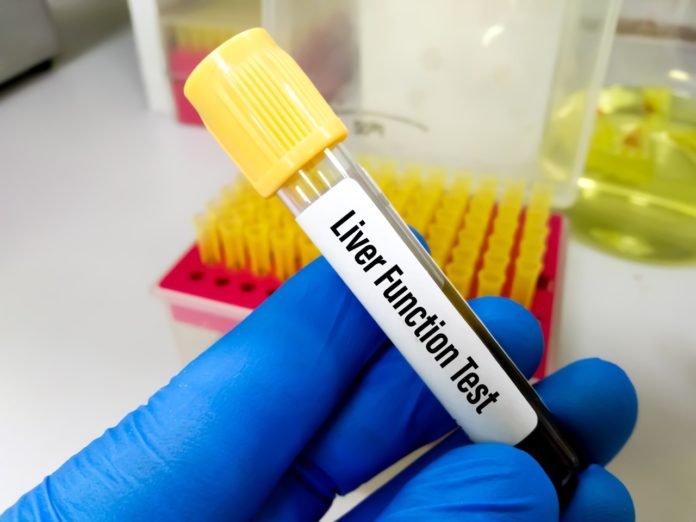A liver function test (LFT), also called a hepatic function panel, is a blood test that measures the levels of enzymes and proteins excreted by your liver.
While some of these tests measure how well the liver performs its normal functions, others measure enzymes that liver cells release during liver damage or disease.
LFTs help diagnose and monitor liver disease or damage. If the levels are higher or lower than the normal range, it indicates that a person’s liver is not functioning optimally.
When is a liver function test done?
A physician requests an liver function test to establish the presence of damage or inflammation in the liver. LFTs help to:
- Screen for infection or inflammation affecting your liver, such as hepatitis (infectious or alcoholic)
- Aid in the diagnosis of other conditions such as gallstones
- Assess progression and severity of liver disease and determine response to therapy
- Monitor adverse effects if you are taking prescription or non-prescription medicines that can affect liver functioning
- Weakness or fatigue
- Loss of appetite
- Abdominal pain or swelling
- Jaundice
- Passing dark-coloured urine or light-coloured stool
- Having a family history of liver diseases
- Being overweight while having diabetes or hypertension
How do I prepare for an liver function test?
Having an LFT done doesn’t require any special preparation. The technician can collect the sample at any time of the day. Some medicines may affect the test outcomes, so it may be helpful to let your physician know about all prescription and non-prescription drugs you take.
How is a liver function test performed?
Your blood will be drawn in a hospital or a diagnostic centre. To administer the test:
- A nurse or a para-medical staff will first clean your skin before the test at the injection site to minimise the possibility of infection due to any microorganisms on the skin
- An elastic strap is wrapped on the arm, which will help in making your veins visible. Then, a needle is used to draw blood samples from your arm.
- Some gauze and a bandage is placed over the puncture site after drawing the blood. Then, the blood sample is sent to a laboratory for testing.
What tests does an Liver Function Test include?
An LFT cannot provide a diagnosis independently but can provide important clues about potential liver function problems.
Here are the standard tests included in an liver function test panel:
- Alanine transaminase (ALT): ALT is an enzyme found in liver cells that helps convert proteins into energy. The normal range is from7 to 55 units per litre (U/L). During liver infection, inflammation, or any other form of damage, hepatic cells release increased quantities of ALT into the bloodstream.
- Aspartate transaminase (AST): The enzyme AST helps metabolize amino acids. Like ALT, AST usually is present in blood at low levels. Average values range from 8 to 48 U/L. When liver damage sets in, AST levels rise in the blood.
- Alkaline phosphatase (ALP): ALP is an enzyme in the liver and bone and plays a crucial role in breaking down proteins. ALP levels typically range from 40 to 129 U/L. Levels of ALP beyond this range may indicate liver damage or diseases, such as a blocked bile duct or certain bone diseases.
- Albumin and total protein: Proteins are vital in the body for a host of functions, including immunity. Albumin is one such protein. Albumin levels in the blood usually range from 3.5 to 5.0 grams per deciliter (g/dL), and total proteins from 6.3 to 7.9 g/dL. When albumin levels and total protein are lower than normal, it may indicate liver damage or disease.
- Bilirubin: Bilirubin is a compound produced during the physiological breakdown of red blood cells. Bilirubin levels in the blood usually range from 0.1 to 1.2 mg/dL. Elevated bilirubin levels (jaundice) may indicate liver damage or disease or certain types of anemia.
- Gamma-glutamyltransferase (GGT): GGT is a liver enzyme. In blood, its levels generally range between 8 to 61 U/L. The presence of GGT levels beyond this range may indicate liver or bile duct damage.
- L-lactate dehydrogenase (LDH): LDH is an enzyme found in the liver. Elevated levels may indicate liver damage. However, its levels can be high in other clinical conditions as well.The normal range for LDH levels in the blood is 122 to 222 U/L.
- Prothrombin time (PT): PT measures the time it takes for your blood to clot and ranges from 9.4 to 12.5 seconds. When PT is higher than this normal range, it may indicate liver damage, but its levels can also increase if you’re taking anticoagulants (blood-thinning drugs), such as warfarin.
The results mentioned here vary from laboratory to laboratory and might be slightly different for women and children.
When to Avoid Liver Funtion Test?
There is no specific condition when this test should be avoided. Inform your doctor about any medications, prescription or over-the-counter medications, including herbal supplements, that may affect the liver function test results.











